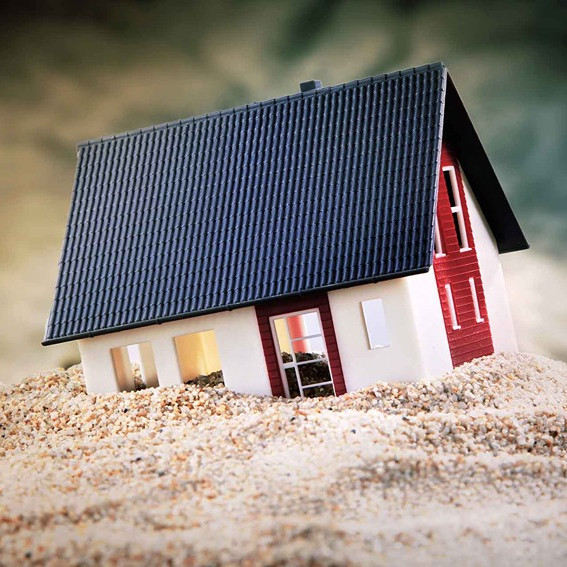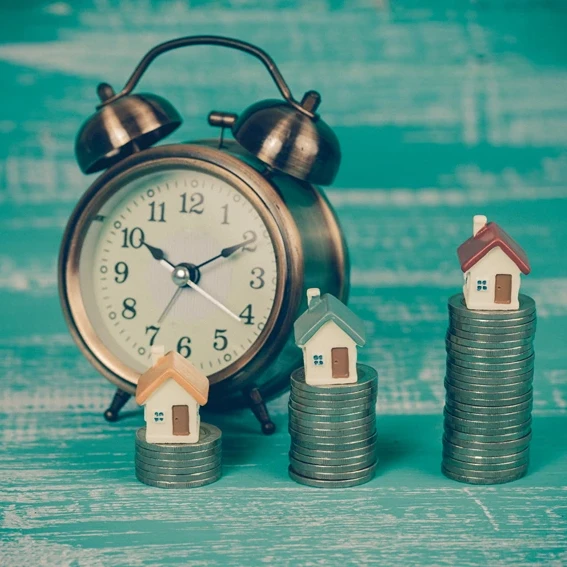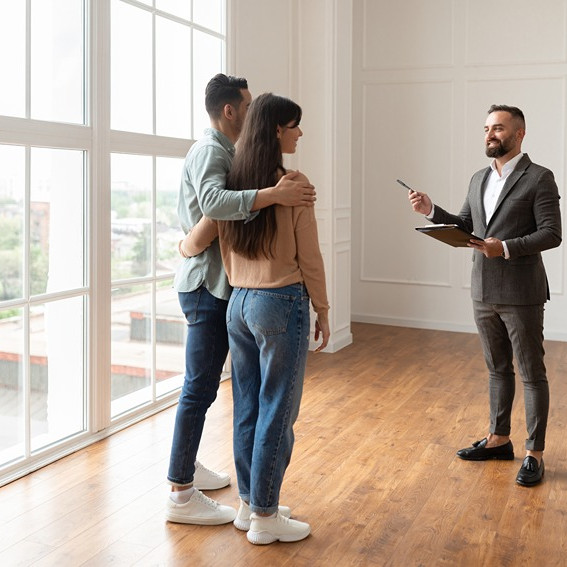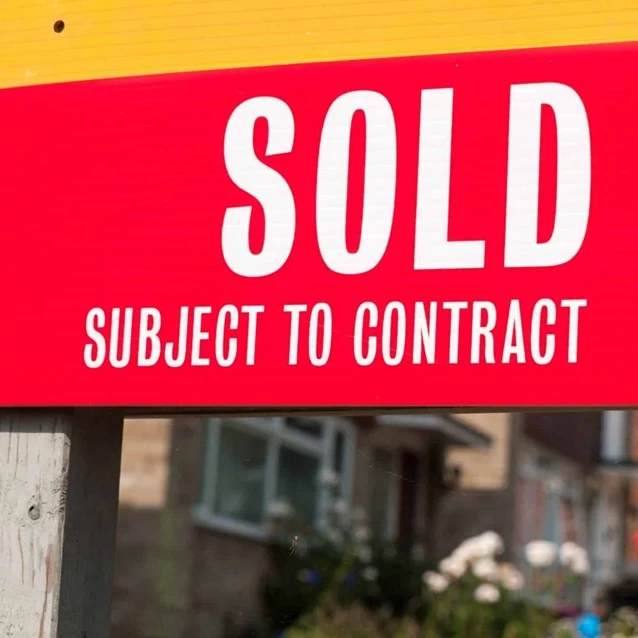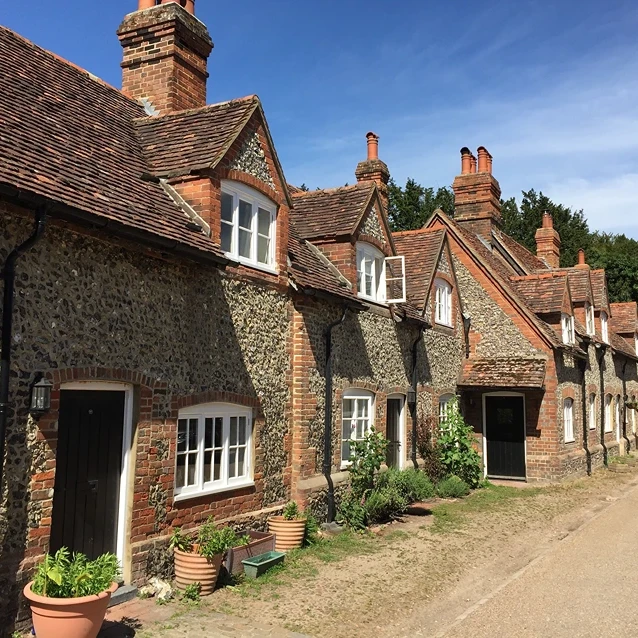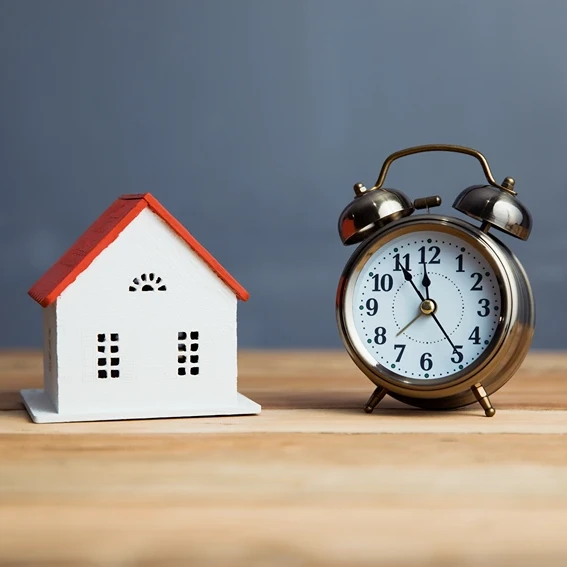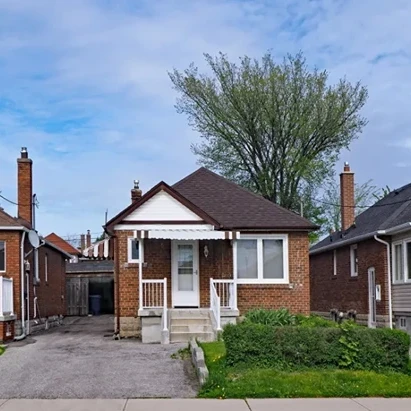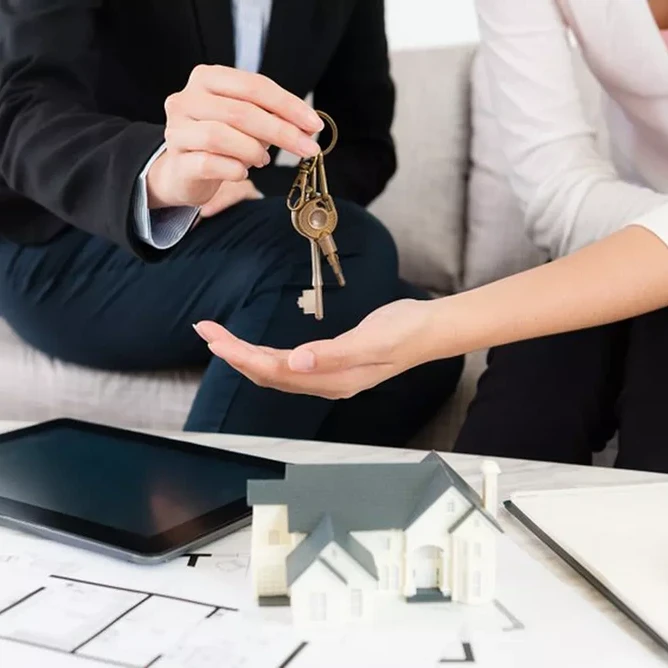Staring down the stumbling block of an unmortgageable property might feel like a game-ender, but have you considered the potential for turning the tide? Whether it’s a hidden gem you’re eyeing to buy or a home you’re desperate to sell, understanding the reasons and criteria behind a property’s unmortgageable status is critical. Let’s unravel the common causes and decipher the lender’s checklist, providing you with the necessary insight to identify these properties and the knowledge to rectify the issues, restoring their appeal to lenders and buyers alike.

What Defines a Property as Unmortgageable?
Are you wondering what makes a property unmortgageable? There are several reasons why a property may be deemed unmortgageable by lenders. Understanding these reasons is key to identifying such properties and addressing the issues.
- Unmortgageable Reasons
- Condition: Deteriorated or unsafe structures, or buildings with significant disrepair are often labelled unmortgageable.
- Construction: Properties with unusual constructions, such as prefabricated or high-rise concrete panels, can be difficult to mortgage.
- Lease Length: Short leases, typically less than 70 years, can be problematic for lenders. This is particularly true for leasehold properties harder to sell. The leasehold structure often complicates the mortgage process, making it essential for potential buyers to understand the implications and challenges associated with such properties.
- Location: Properties in close proximity to commercial premises or in areas with environmental issues are often rejected.
- Legal Issues: Absence of appropriate planning permissions or building regulations approval can cause unmortgageability.
- Criteria for Unmortgageable Property
Lenders determine the criteria for unmortgageability based on the risk they pose. If a property is in a state that could lead to value depreciation or it’s not saleable, lenders might not grant a mortgage. Factors include structural integrity, marketability, and legal issues. - Identifying Unmortgageable Houses
Potential buyers can spot an unmortgageable property by looking for common red flags like defects noted in survey reports, short leases, or abnormal construction methods.
For more detailed insights into the characteristics of unmortgageable properties, consider reading this comprehensive guide from Property Solvers. If you’re wrestling with procuring a mortgage for a property or identifying potential red flags before a purchase, empowering yourself with knowledge is the first step to successfully navigating these challenges.
What Structural Issues Lead to Unmortgageability?
When you hear that a house is unmortgageable, it’s often down to significant structural issues. The most common of these include subsidence, which is when the ground underneath a house begins to collapse or sink, causing the building to shift; severe damp problems that can affect the integrity of the structure; roof defects that could lead to serious leaks or collapses; and wall fractures that may suggest deeper stability concerns.
But why are particular types of properties, like Cornish unit houses, frequently unmortgageable? These properties have a unique construction featuring walls made from concrete panels, which over time can lead to structural decay that is difficult and expensive to fix. Problems specific to Cornish units and similar constructions often fall outside the parameters of what most mortgage lenders are willing to finance because of the high risk and cost involved in remediation.
For comprehensive guidance on these issues, consider exploring resources like Property Solvers Insights, which delve into the specifics of property flaws and unmortgageability.
By understanding the various structural concerns leading to unmortgageability, homeowners and prospective buyers can make informed decisions about whether to invest in repairs or consider alternative strategies for sale or purchase. One such strategy could be to sell to your own company. This approach can offer a unique solution, especially for those looking to retain control over the property while addressing its unmortgageable status. By selling to your own company, you can manage the necessary repairs and improvements more effectively, potentially transforming the property into a mortgageable asset.
How Can You Address and Resolve Issues with Unmortgageable Properties?
When you’re faced with an unmortgageable home, it might feel like a dead end, but rest assured, there are steps you can take. The main question is: Can you make an unmortgageable property mortgageable again? The answer is yes, it is possible to convert an unmortgageable property into a mortgageable one, often through addressing the specific issues that prevent it from qualifying for a mortgage.
- Identify the Problems: First, you need to pinpoint the exact reasons your property is considered unmortgageable. This could range from structural problems to legal issues.
- Make Necessary Repairs: Often, physical defects like defective title, structural flaws, or the presence of hazardous materials like asbestos can be remedied. Investing in these repairs can change the status of your property.
- Seek Expert Advice: Legal and structural issues can be complex. Professionals such as solicitors or surveyors can give advice on how best to address these problems.
- Consider Alternative Financing: While fixing the issues, you might need funds to do so. Options like a bridging loan could be a solution. For guidance on alternative financial solutions, check out How to get a loan for an unmortgageable house.
- Regular Updates: Keep in touch with mortgage advisors. Once the issues are resolved, they can reassess your property’s mortgageability.
Transforming an unmortgageable property into one that can secure a mortgage involves addressing the specific defects and working with experts who can guide you through the necessary repairs and legal hurdles. This process can not only make the property eligible for a mortgage but can also significantly increase its value and appeal to a broader range of buyers.
What Financial Alternatives Exist for Purchasing Unmortgageable Homes?
If you’re considering buying a home that’s currently unmortgageable, you might be wondering about your financing options. The standard mortgage route might not be available, but you’re not out of choices. Let’s explore what you can do.

Your Options for Financing the Purchase of an Unmortgageable Home
Firstly, alternatives to traditional mortgages do exist. What are they? You can look into specialist lending options, seek out private investors, or consider a lease option. These options often require a bit more legwork, but could potentially open the door to your property purchase. Another option available is securing a loan specifically designed for properties that fail to meet standard mortgage criteria, as outlined by Clifton Private Finance.
Cash Purchases for Non-Standard Homes
Paying with cash is, perhaps, the most straightforward alternative. Buying a house with cash bypasses the need for mortgage lending criteria and can speed up the transaction process significantly. You’ll need a sizeable amount of savings or access to funds, but cash buying removes the complications of lending criteria associated with non-standard homes.
Property Auction Advice for Unmortgageable Homes
Auctions are another popular route for acquiring unmortgageable properties. Why? Because the issues causing unmortgageability — like structural defects or short leases — are often known up-front, allowing you to bid with these factors in mind. Before heading to auction, make sure to do your due diligence. Understand what you’re getting into, and consider the potential cost of any necessary repairs or legal complexities.
Buying a home that’s unmortgageable comes with challenges, but also potential opportunities. Understanding the financial alternatives available can empower you to make informed decisions and possibly snag a property that others might overlook. Remember to consider the long-term implications and potential for addressing the issues that have rendered the property unmortgageable in the first place. With the right strategy and a bit of knowledge, you might just turn an unmortgageable property into a valuable asset.
How Does Being Unmortgageable Affect the Property’s Market Value and Sale Potential?
When learning about a property’s difficulty to mortgage, the immediate question is: How does being unmortgageable affect its market value and sale potential?
Impact on Market Value
The truth is, being unmortgageable can substantially lower a property’s market value.
Why?
Because a smaller pool of buyers—mostly those who can afford cash purchases—will be interested.
Here’s what you need to know:
- Factors such as adverse location can increase the risk of a property being unmortgageable.
- If banks have previously refused mortgages on a property, this ‘diminution in value’ becomes a reality, as future buyers may also face similar rejections.
Estate Agency Strategies
Selling a home that’s tough to mortgage is challenging, but not impossible.
Estate agencies adopt several strategies to overcome these hurdles:
- Highlighting the property’s unique features potentially attractive to niche buyers or investors who might not require a mortgage.
- Marketing the property at a lower price to attract cash buyers or those looking for a renovation project.
- Offering transparent and detailed information on the condition of the property to avoid surprises during the buying process.
To delve deeper into the specifics on unmortgageable properties, a thorough guide can be found on Property Solvers.
In essence, while an unmortgageable status can influence the market value and sale potential of a property, informed estate agency strategies can mitigate these effects, offering a viable path to sale for the homeowner.
How Can You Address and Resolve Issues with Unmortgageable Properties?
Are you wondering if there’s a way to fix a home that’s been labeled as unmortgageable? Yes, you can indeed resolve issues with such properties and possibly convert them into mortgageable assets.
Addressing the Unmortgageability
- Assessment and Understanding
To begin, you need to pinpoint exactly why the property is deemed unmortgageable. An expert survey will help you understand the specific defects or issues. - Professional Advice
Consult with professionals who specialize in property restoration and structural defects to seek advice on how to rectify the problems identified. - Planning the Work
Once the issues are known, plan out the necessary works. This might include structural repairs, damp proofing, or addressing other significant flaws.
- Obtaining Quotes
Get multiple quotes from reputable contractors who have experience in turning around unmortgageable properties. - Consider Financing Options
If funds are needed to carry out the repairs, consider alternative financing. Check out how to get a loan for an unmortgageable house to understand your options.
Effective Strategies for Resolving Unmortgageability
Following an assessment, typical strategies to tackle the issues may include:
- Structural reinforcements or repairs,
- Replacing or repairing the roof,
- Remedying damp or infestation problems,
- Updating outdated or dangerous electrical systems,
- Improving poor plumbing.
Converting Unmortgageable to Mortgageable
The end goal is to ensure that the property adheres to the lending criteria of financial institutions:
- Certification of Repairs
Once the repairs are done, ensure you have all the proper certifications and warranties to prove that the work has been carried out to a good standard. - Re-evaluation
Have the property re-evaluated by a surveyor to affirm that it is now up to par with mortgage lending standards. - Reaching Out to Lenders
Present the updated, certified information to lenders to reassess the mortgageability of the property.
By carefully addressing each issue that has led to the property being considered unmortgageable, you can potentially increase its value and appeal to both lenders and buyers. The process requires diligence, investment, and patience but can ultimately render a ‘non-standard’ property desirable and financially viable for a mortgage application.

Conclusion
Understanding the nuances of what makes a property unmortgageable is quintessential for both sellers and buyers in the Scottish property market. From identifying common reasons like structural issues to addressing these concerns, this blog post has covered crucial insights into overcoming barriers to mortgageability. Knowing your financial alternatives, whether it’s considering cash purchases or exploring auctions, can empower you to make informed decisions. Moreover, appreciating how unmortgageability affects a property’s value can guide your strategy when selling or buying. Remember, with the right approach and expert advice, navigating the complexities of unmortgageable properties can become straightforward, ensuring your property transactions in Scotland are as efficient and stress-free as possible.
FAQ
FAQ: Understanding Unmortgageable Properties
Q: What are the common reasons for a property being labelled as unmortgageable?
A: Properties are often deemed unmortgageable due to various issues including:
- Poor condition, such as deteriorated structures or significant disrepair.
- Unconventional construction methods, like prefabricated or high-rise concrete panels.
- Short lease lengths, typically under 70 years.
- Proximity to commercial premises or locations with environmental issues.
- Legal problems, such as a lack of appropriate permissions or building regulation approvals.
Q: Which structural problems typically lead to a property being unmortgageable?
A: Significant structural issues that can make a property unmortgageable include:
- Subsidence leading to shifting of the building.
- Severe dampness affecting structural integrity.
- Roof defects with potential for leaks or collapses.
- Wall fractures indicating stability concerns.
Q: Can you resolve unmortgageable issues and how?
A: Yes, you can address and resolve issues making a property unmortgageable by:
- Identifying and understanding the exact problems.
- Consulting with professionals for expert advice.
- Planning and undertaking necessary repairs.
- Considering alternative financing options for repairs.
- Regularly updating mortgage advisors on the property’s status after resolving issues.
Q: What financial options exist for purchasing an unmortgageable home?
A: Alternative financial options for acquiring an unmortgageable property include:
- Looking into specialist lending options or private investors.
- Exploring lease options tailored to non-standard properties.
- Considering a cash purchase, which sidesteps mortgage requirements.
- Participating in property auctions with informed bidding strategies.
Q: How does the status of being unmortgageable impact a property’s market value and sale potential?
A: Being unmortgageable usually reduces a property’s market value due to:
- A decreased buyer pool, confined mostly to those with the ability to make cash purchases.
- Estate agents may adopt strategies like marketing the property at a lower price to attract niche buyers or investors and providing detailed property conditions upfront.
Robbie Jamieson
Robbie’s passion for real estate extends beyond the conventional, bringing fresh and dynamic ideas to the table. His expertise in leveraging online platforms ensures that your home receives the attention it deserves in today’s competitive market.
Related Posts
How Much Does Subsidence Devalue Property
August 21, 2024
Concerned how much subsidence could devalue your property? Get expert insights on the financial impact and solutions in our guide.
How Long to Sell a House? Quick Sale Insights
August 20, 2024
Curious about how long it takes to sell a house? Read on for expert insights and guidance on the Scottish market.
How Many Viewings to Sell a House
August 16, 2024
Ever wondered how many viewings to sell a house quickly? Get statistics, tips, and strategies for a swift UK property sale.
What Does Sold STC Really Mean for Your Sale
August 15, 2024
Curious about ‘Sold STC’ meaning? Our blog demystifies the term for buyers & sellers navigating UK property sales.
Selling a House Over a Mine Shaft? What You Need to Know
August 9, 2024
Selling your house with a mine shaft? Get expert tips on value assessment, legalities & buyer reassurance. Navigate mine shaft property sales with confidence.
Can You Sell a Leasehold Property Easily
August 2, 2024
Wondering if you can sell a leasehold property in Scotland? Get expert tips on the process & legalities to sell with ease and confidence.
Can You Sell a House with a Mortgage Easily
July 23, 2024
Curious if you can sell a house with a mortgage? Get the facts on legalities and logistics in our latest post.
How Long Does It Really Take to Sell a House
July 15, 2024
Wondering what is the average time to sell a house in Scotland? Get the facts and strategies for a quick sale with our guide.
Do Bungalows Sell Quickly? The Data Will Shock You
July 12, 2024
Wonder if bungalows sell quickly? Our latest post delves into the Scottish market, with tips to expedite your sale.
Is Buying Property Solo Doable in Scotland?
July 3, 2024
Is it possible to buy a property on your own? Yes, with the right info on solo buying in Scotland, you can! Get solo property tips here.



